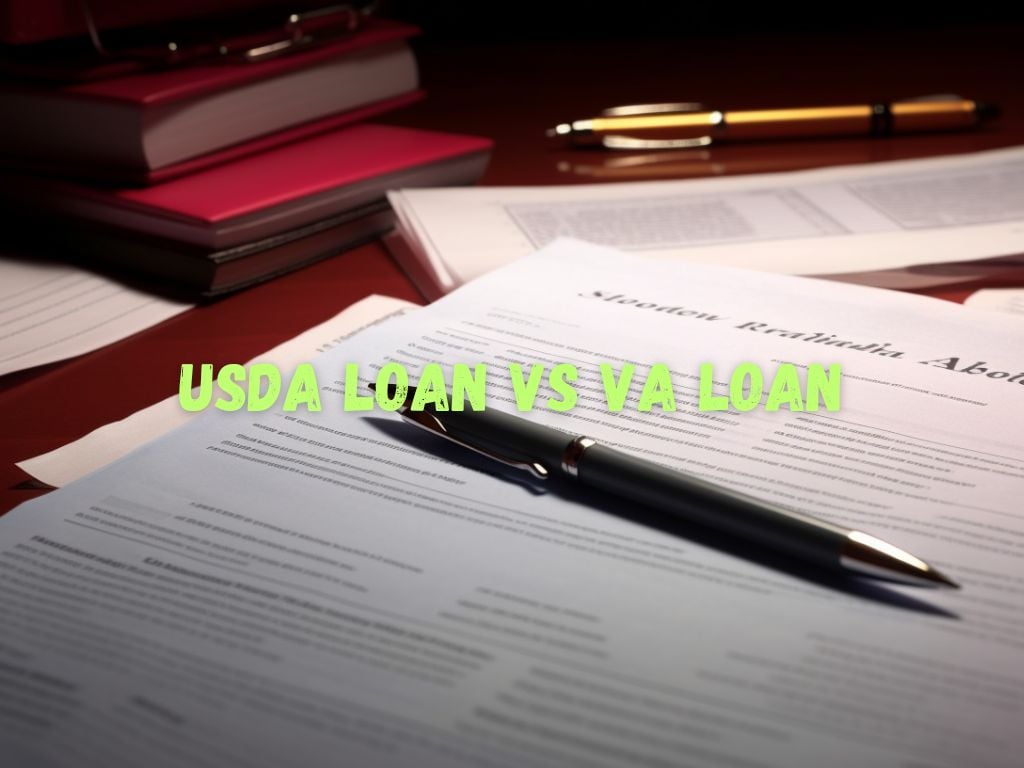When it comes to financing your dream home, understanding the available mortgage options is crucial.
Two popular loan types that cater to different sets of borrowers are USDA loans and VA loans.
In this comprehensive comparison guide, we will explore the critical differences between these loan options, allowing you to make an informed decision for your homeownership journey.
USDA Loan vs VA Loan: A Detailed Comparison
Eligibility Requirements
To qualify for a USDA loan, certain eligibility criteria must be met:
- Rural property location: The property must be located in a designated rural area.
- Income limits: There are income limits based on the size of the household.
- U.S. citizenship or permanent residency: The borrower must be a U.S. citizen or have the appropriate documentation.
However, the eligibility for a VA loan is restricted to specific individuals:
- Military service: Active duty members, veterans, and certain surviving spouses may qualify.
- Minimum service requirements: The borrower must have served a minimum period, usually 90 consecutive days during wartime or 181 days during peacetime.
- Certificate of Eligibility (COE): Obtaining the COE from the VA is necessary to prove eligibility.

Down Payment and Loan Amount
One of the significant advantages of USDA loans is the low or zero down payment requirement.
Eligible borrowers can potentially finance up to 100% of the home’s appraised value without a down payment.
Similarly, VA loans offer the perk of no down payment in most cases. This is a substantial benefit for qualified borrowers who have served in the military.
Mortgage Insurance
USDA loans require mortgage insurance in the form of an upfront fee and an annual premium.
The upfront fee can be financed into the loan, reducing the immediate out-of-pocket expenses. The annual premium is lower compared to other loan programs.
VA loans do not require private mortgage insurance (PMI). However, they do have a funding fee that acts as a substitute for mortgage insurance.
The funding fee varies based on the borrower’s military category, down payment amount, and whether it is the borrower’s first or subsequent VA loan.
Credit Score and Qualification
While credit requirements for USDA loans are more flexible compared to conventional loans, lenders generally look for a credit score of 640 or higher.
Some lenders may consider borrowers with lower credit scores on a case-by-case basis.
Similar to USDA loans, VA loans have more lenient credit score requirements compared to conventional loans.
Typically, a minimum credit score of 620 is preferred, but lenders may consider borrowers with lower scores.
Appraisal
USDA loans require a property appraisal to ensure it meets the program’s guidelines and is in satisfactory condition.
The appraiser will assess the property’s value, condition, and compliance with USDA standards.
One crucial factor is that the property must be located in a designated rural area, as defined by the USDA. The appraiser will also evaluate the property’s safety, habitability, and compliance with local building codes.
However, it’s important to note that the USDA appraisal process is not a substitute for a comprehensive home inspection.
VA loans also require a property appraisal conducted by a VA-approved appraiser.
The VA appraisal process has similar objectives to the USDA process: assessing the property’s value, condition, and compliance with safety standards.
The appraisal aims to ensure the property is suitable for financing through a VA loan.
Additionally, the VA appraisal process considers the property’s market value and verifies that it meets the VA’s Minimum Property Requirements (MPRs) to ensure its safety and habitability.
However, similar to USDA loans, a VA appraisal is not a substitute for a thorough home inspection.

Property Requirements
Aside from the location requirements, USDA loans have specific property eligibility guidelines.
The property should be used primarily for residential purposes and must meet certain standards regarding safety, functionality, and the local area’s zoning regulations.
The property must also be in generally good condition and free from significant deficiencies or structural issues that could affect habitability.
The USDA has a list of requirements that cover various aspects, including water and sewage systems, heating, roofing, and more.
VA loans also have property requirements to ensure the property is safe, habitable, and meets the VA’s MPRs.
The VA wants to ensure that the borrower is purchasing a property that is in good condition and free from major issues that could affect its value or pose health and safety risks.
The MPRs cover various areas, including structural integrity, utilities, electrical systems, roofing, plumbing, and more.
The goal is to ensure that veterans and their families have a safe and suitable home.
Interest Rates and Fees
Interest rates for USDA loans are generally competitive. However, they can vary depending on the lender and market conditions.
It’s crucial to shop around and compare rates from different lenders to secure the best deal.
VA loans often offer competitive interest rates in recognition of the borrower’s military service.
As with USDA loans, rates can vary among lenders, so shopping around is essential to find the most favorable terms.
USDA Loan vs VA Loan: Benefits and Drawbacks
Benefits of USDA Loans:
- No down payment: USDA loans provide an excellent opportunity for borrowers with limited savings to achieve homeownership without a down payment.
- Affordable mortgage insurance: The annual mortgage insurance premium for USDA loans is typically lower than other loan programs, providing cost savings.
- Favorable interest rates: USDA loans often offer competitive interest rates, making home ownership more affordable.
Benefits of VA Loans:
- No down payment: VA loans allow eligible borrowers to finance 100% of the home’s value without the need for a down payment, making homeownership more accessible.
- No mortgage insurance: With no requirement for private mortgage insurance, VA loans offer potential savings each month.
- Flexible credit requirements: VA loans are more forgiving of past credit challenges, enabling more individuals to become homeowners.
Drawbacks and Limitations of USDA Loans:
- Restricted property eligibility: USDA loans are limited to designated rural areas. Borrowers must ensure that the property they wish to purchase is in an eligible location according to the USDA’s definition of rural.
- Income limits: USDA loans have income limits based on the size of the household and the area’s median income. Borrowers must meet these limits to qualify for the loan.
Drawbacks and Limitations of VA Loans:
- Limited eligibility: VA loans are only available to eligible military veterans, active duty members, and certain surviving spouses. Borrowers must meet specific service requirements and obtain a Certificate of Eligibility (COE) to prove their eligibility.
- Funding fee: While VA loans don’t require mortgage insurance, they do have a funding fee that serves a similar purpose. The funding fee varies depending on the borrower’s military category, down payment amount, and whether it’s their first or a subsequent VA loan. The funding fee can be financed into the loan but adds to the overall cost.

Frequently Asked Questions
What is the main difference between a USDA loan and a VA loan?
USDA loans focus on providing affordable financing options in designated rural areas, while VA loans cater specifically to eligible military veterans, active duty members, and certain surviving spouses.
Can I use a USDA loan or VA loan for refinancing?
Yes, both USDA loans and VA loans can be used for refinancing existing mortgages under specific circumstances.
Do USDA loans and VA loans require mortgage insurance?
USDA loans require mortgage insurance with an upfront fee and an annual premium.
On the other hand, VA loans do not necessitate private mortgage insurance but have a funding fee that serves a similar purpose.
Conclusion
Comparing USDA loans vs VA loans is essential for homebuyers looking for the right mortgage option.
Each loan type has unique eligibility criteria, down payment requirements, mortgage insurance considerations, credit score requirements, and other differentiating factors.
By understanding the distinctions, potential borrowers can confidently choose the loan option that aligns with their financial goals and homeownership aspirations.


 Tags:
Tags:










